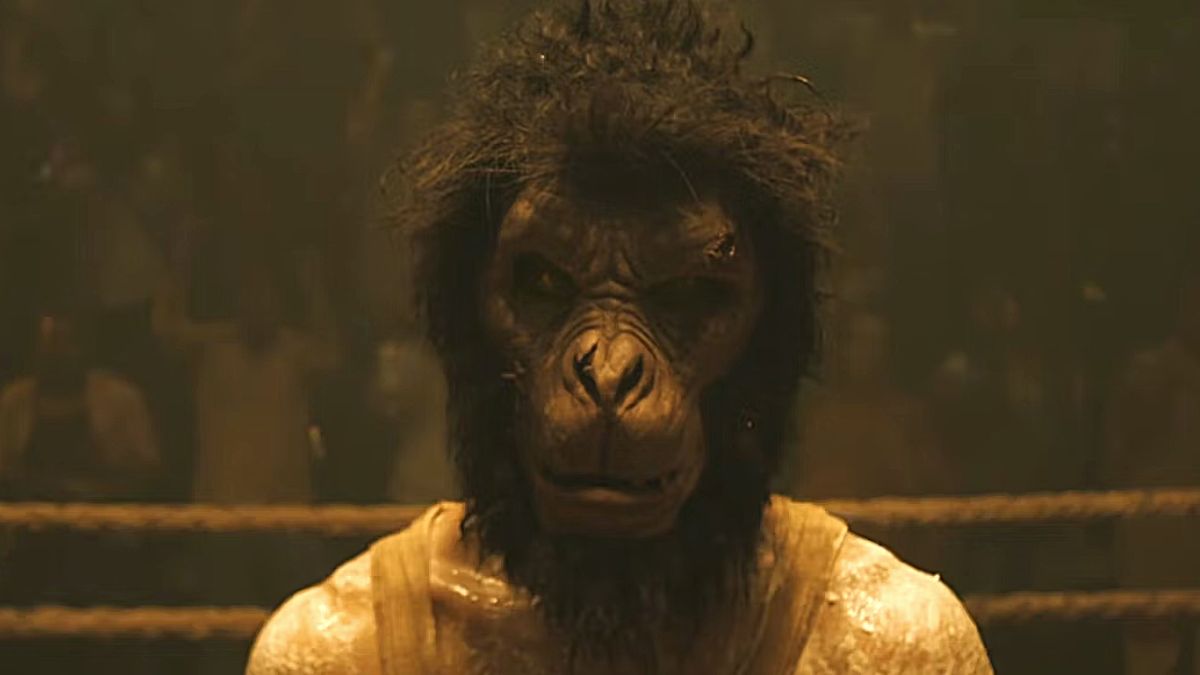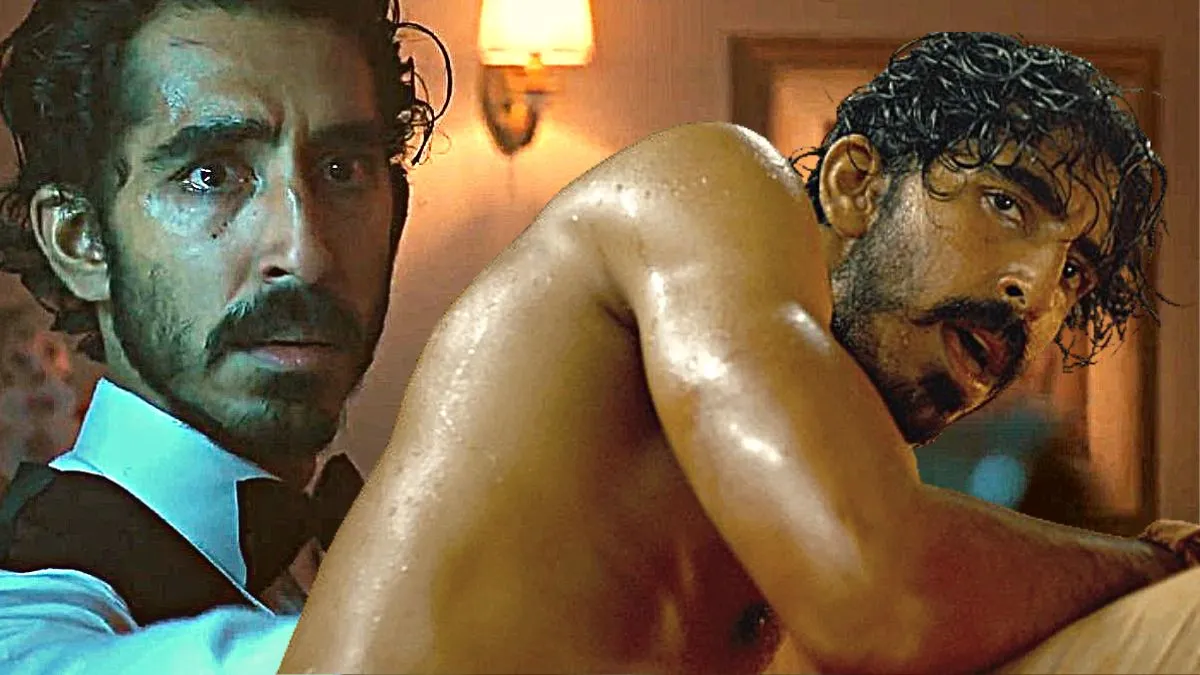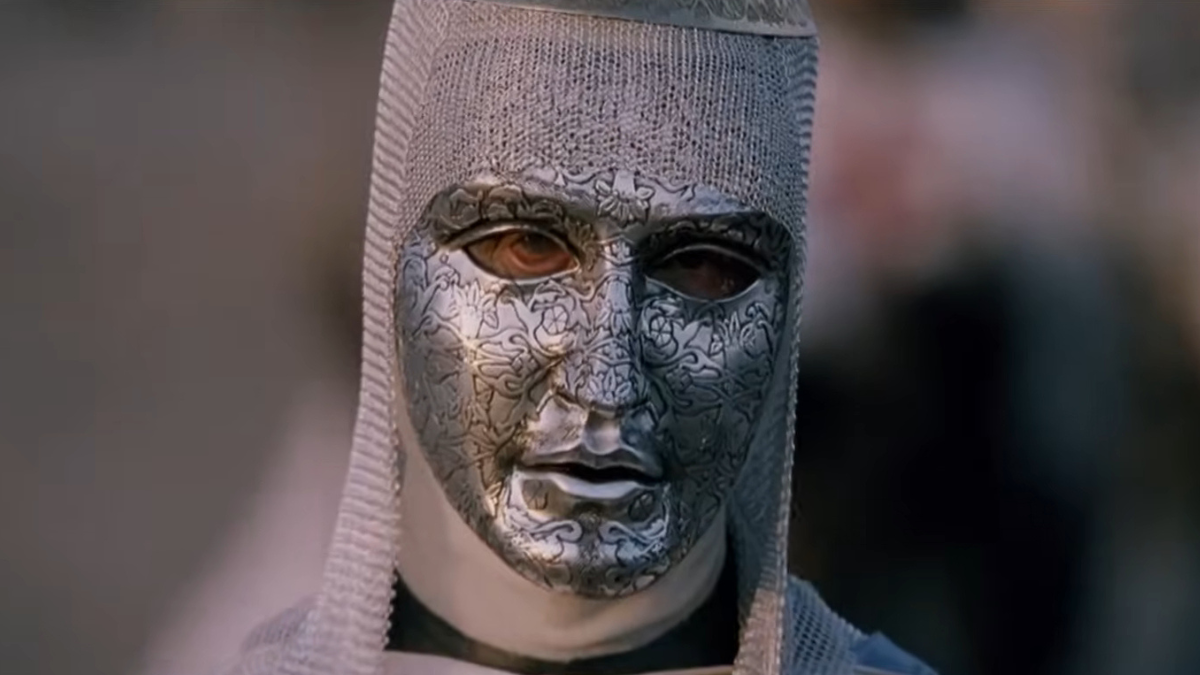Dev Patel is a man of action, and that can be applied to at least two different dimensions when it comes to his directorial debut and passion project Monkey Man.
The film was born out of Patel’s desire to tell this story, and when his first choice of director — Neill Blomkamp, who directed him in 2015’s Chappie — turned down the project due to the cultural knowledge and understanding the script demanded, the Oscar-nominated actor took a leap of faith and took on the role himself. By Patel’s own account, production was chaotic. The pandemic’s border restrictions meant losing a good portion of the team and swapping the Indian setting for an Indonesian island, but there were also financing problems, broken cameras replaced by Patel’s phone, broken bones, and even the death of a gaffer from a heart attack. Nothing, however, could stop Patel from finishing the film.
Patel is not just a man of action, though ⏤ he’s also a fan of it. Monkey Man is an ode to the actor’s favorite action films, from South Korean revenge thrillers like Oldboy and The Man from Nowhere to Bollywood movies, Indonesia’s cult classic The Raid to Hong Kong’s martial arts heroes like Bruce Lee and Sammo Hung, and of course John Wick, which even gets its own cheeky mention in the film. It’s clear that the person behind the film not only appreciates the action genre, but celebrates it and strives to elevate it. That’s also the merit Jordan Peele saw in it when he decided to buy it from Netflix through his production company, Monkeypaw Productions, and take it to Universal for distribution.

In Monkey Man, Patel takes the archetypal action film to new heights by infusing it with a rich cultural history, background, and motivation. The film follows Kid (Patel), a fighter in an underground ring who gets paid to lose and whose mother Neela (played by Adithi Kalkunte) was killed by a policeman (Sikandar Kher’s Rana) when he was a child. His whole life, he’s been planning a way to get to this man and avenge her death, but through that journey and the people he meets along the way, he acquires a much deeper incentive that turns his personal quest for vengeance into a war for social justice.
The concept is laudable, visionary, and ambitious — perhaps too much so. The first hour of Monkey Man is as firm and punchy as its leading man, but the more elements that are added and the more its entropy increases, the more Patel struggles to keep his steady grip on the story, and more specifically, its tone.
There’s a rich tapestry of characters that come together to paint a vivid picture of India’s caste system, represented visually and literally in the form of the elevator that takes Kid from the steamy, packed, and closed-off kitchen of the luxury brothel his nemesis frequents to the spacious and floor-to-ceiling window-covered penthouse that’s only accessible to the madam (Queenie, played by Ashwini Kalsekar) and her most esteemed guests. The structure of the hero’s journey in the film, throughout which Kid takes down every rank to get to the “final boss,” lends itself perfectly to the caste system. This parallelism in Patel’s underdog story is fascinating to watch, even if he bites off more than he can chew (almost literally at times, because there’s quite a lot of biting in this film).

After Kid’s first failed attempt to take out the corrupt policeman who killed his mother, he’s rescued and taken in by a group of Hijra (South Asia’s third gender community), whose guru guides him to a newer, wider purpose. This is the moment where his initial plan transitions into something much deeper, and Kid goes on, no longer fighting just for his trauma, but for everyone else’s, too. This change happens in tandem with the reveal of further, more significant details about Neela’s killing, which in turn also re-calibrates the viewer toward a new, much more preserved enemy that had been behind Rana’s actions all along. Corrupt police are a frequent enemy of the people in life and film, but this new target adds a much more complex and sinister layer to the story that Monkey Man never really manages to fully grasp, despite its best and most honest attempts.
Faith ultimately holds the biggest weight out of Monkey Man‘s many elements. It inspires not only Kid’s fighting ring persona, but also the film’s title and the direction the narrative ultimately takes. It opens with Neela telling a young Kid about the legend of Hanuman, the half-monkey, half-human Hindu god who mistook the sun for fruit and tried to eat it as a child, consequently receiving punishment from the gods. The deity features frequently throughout the film, often as part of Kid’s own spiritual awakenings, but also as a cultural parallel for his timeless plight as an underdog squaring up against those who exploit and abuse him and his class peers. Still, a deeper knowledge of Hanuman’s folklore is needed to understand all the symbolism Patel inserted into the protagonist and his journey. As a result, although conceptually and visually captivating, this element of the story could prove difficult to grasp for a wider, Western audience (which, although worthy of notice, is not problematic in itself, and could generate a lot of post-viewing research and theorizing that could extend Monkey Man‘s longevity).

It’s clear and admirable what Patel is trying to accomplish here, but these many elements are hard to successfully combine and see through even for the most experienced of filmmakers, so it’s only natural that the first-time director can’t quite carry Monkey Man through to the finish line. Aspects of the varying themes are either overly complex or over-simplified to serve the central revenge plot, and some cliché moments come close to spoiling the gravitas that otherwise defines the film.
Regardless, Monkey Man is chock-full of memorable sequences and showstopping gasp-for-air moments emphasized by inventive fight choreography, directing, photography, and editing. There’s evident flair and exciting style in Patel’s filmmaking vision, and his charisma both behind and in front of the camera is undeniable — after all, there aren’t many eyes in the business as expressive as his. The multi-hyphenate actor-writer-director showcases a thorough syntony with the story and its message, yet lacks the language to fully translate it to the screen. Still, we can easily discern what it was that he wanted to do with this film, and his attempt is earnest and fierce enough to conceal some of its most obvious flaws.
If anything, Monkey Man is definitive proof of why Patel has built a career as a leading man straight off of Skins and shown no signs of slowing down since. It’s also a positive sign that he might take that energy and put it into building an equally thrilling career as a director.







